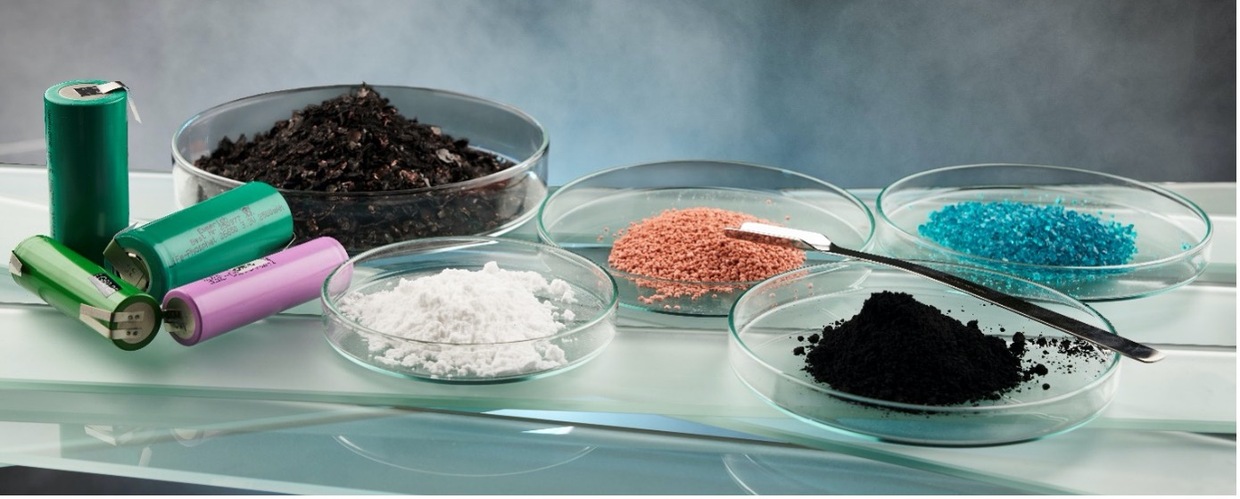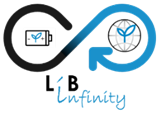From the cradle to the grave:

Activities in Li-Ion battery (LIB) recycling have become more and more prominent at IAM-ESS. Since not only has the quest for better batteries moved into the focus of research, economic and ecologic production must also be considered. Recycling of used battery cells or scrap material from production will present an enormous future challenge and a promising source of raw materials. IAM-ESS is jumping on the train with several coordinated activities.
The growing use of LIBs leads to surging amounts of waste in the form of production scrap and End-of-Life (EoL) batteries. It is predicted that the number of LIBs ready for recycling is expected to increase 700 times between 2020 and 2040. This situation brings a significant challenge to the waste management sector. However, on the bright side it also provides a great opportunity for industry and an exciting challenge for the scientific community.
Despite the intensive research activity and progress in industry, the recycling technology for LIBs remains in its infancy. The targets proposed by the EU Environment Council within the framework of the EU battery regulation are to ensure more sustainable use of batteries along the entire value chain throughout the EU. It leads to significant investments in new recycling capacities and technologies and joint efforts of the industrial sector and research institutions. The IAM-ESS is actively involved in three such consortia for battery recycling projects.
The LiBinfinity project focuses on a holistic concept for LIB recycling using low-energy mechano-hydrometallurgical processes with improved recycling rates. The technology developed within this project is planned to be transferred from the lab to an industry-relevant scale. The role of IAM-ESS is analysing recycled materials in terms of their suitability for manufacturing new batteries. The mainly targeted components will be cathode materials, as they largely determine the efficiency, reliability, lifetime, and cost of batteries.
In the EU consortium Rhinoceros, launched in 2022, IAM-ESS and 15 other partners from 9 different countries aim at the development, improvement and demonstration of an industrially relevant and economically and environmentally viable route for reusing, repurposing, re-conditioning, and recycling of EoL LIBs. In this project, KIT will use a newly developed and patented technology based on reactive milling to extract lithium from the ‘black mass’. Such an innovative approach will enhance the efficiency of recovering valuable materials from LIB wastes and their conversion into battery-grade material. Furthermore, the proposed method, proven effective on laboratory scale, will be scaled up and tested for economic feasibility.
IAM-ESS also contributs two topics to the LiCORNE project, funded by CINEA and also launched in 2022. This project aims to establish the first-ever complete Li supply chain in Europe using the efforts of the consortium built by 16 partners from 10 countries. The funding received by KIT will be utilized in two work packages. The first includes electrochemical extraction of Li from continental and geothermal brines and desorbed Li solutions. In the second work package KIT will study the mechanochemical extraction of lithium from off-specification battery cathode waste.
IAM-ESS also actively delivers information to the general public. A recent publication of the IAM-ESS battery recycling team lead by Dr. Oleksandr Dolotko and published at CIT Plus journal describes currently used recycling methods and the role of KIT in this field in a short review article [1]. In recent Interviews (3. March 2023) on TV in the German Tagesschau [2] and Radio (Morning Show, SWR) [3], Prof. Helmut Ehrenberg emphasizes the importance of this topic.
IAM-ESS continues to contribute in gaining knowledge and is researching new LIB recycling methods. One recent publication [4] and two patents [5, 6] describe the newly developed and highly efficient mechanochemically induced acid-free process for recycling valuable components from different types of cathodes.
With the efforts of scientists of different expertise, career levels and specializations IAM-ESS continues its marathon in the LIB recycling field.
References.
- O.Dolotko, M. Knapp, H. Ehrenberg „Batterierecycling-Technologien im Überblick“, CITPlus, 2023, 26(3), 16-19. (https://onlinelibrary.wiley.com/doi/epdf/10.1002/citp.202300311)
- https://www.tagesschau.de/multimedia/video/video-1163687.html
- https://www.swr3.de/wir/audio-reihen/das-beste-aus-der-morningshow-100.html
- O. Dolotko, N. Gehrke, T. Malliaridou, R. Sieweck, L.Herrmann, B. Hunzinger, M. Knapp, H. Ehrenberg „Universal and high efficient extraction of lithium for LIB recycling using mechanochemistry”, Comm. Chem., 2023, https://doi.org/10.21203/rs.3.rs-2092200/v1.
- O. Dolotko, M. Knapp, H. Ehrenberg „Mechanochemically Induced Universal Method for Recycling Lithium from Li-ion Batteries”, 2022, EU Patent K 7092EU.
- O. Dolotko, M. Knapp, H. Ehrenberg „Mechanochemically Induced High-Efficient Method for Recycling d-elements from Li-ion Batteries Wastes”, 2022, EU Patent K 7175EU.
Pressebericht
- Ellen Phiddian: New lithium-ion battery recycling method that's energy efficient and needs no added chemicals. 31 March 2023. In: https://cosmosmagazine.com/technology/lithium-ion-battery-recycling-new/
- Stefan Fuchs, Fabian Jeschull (Interviewter): "Weißes Gold aus heimischen Quellen" - Das LiCORNE-Projekt will Lithium in Europa fördern - Campus-Report am 28.03.2023. In: https://publikationen.bibliothek.kit.edu/1000157455



